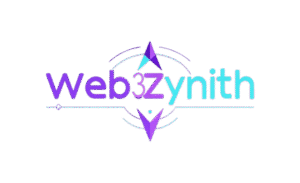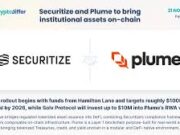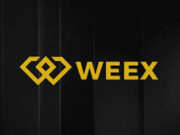At the Astana Finance Days 2025, Kazakhstan’s financial regulator, the Astana Financial Services Authority (AFSA), unveiled a bold pilot project: allowing members of the Astana International Financial Centre (AIFC) to settle license and supervision fees using USD-pegged stablecoins like USDT and USDC. This places Central Asia at the frontier of integrating digital assets into formal regulatory processes. (Cointelegraph, Blockworks, crypto.news, The Cryptonomist)
Bybit Takes the Lead: First Exchange to Sign On
Bybit Kazakhstan, a licensed digital asset service provider within the AIFC, took center stage by becoming the first entity to sign the multilateral Memorandum of Understanding (MMoU) with AFSA. The agreement designates Bybit as a payment agent—handling stablecoin settlements, converting them to fiat, and remitting the funds to AFSA’s bank account. (Cointelegraph, PR Newswire, crypto.news, Blockworks)
How It Operates: Agents, Wallets, and QR Codes
Under the pilot, licensed Digital Asset Service Providers (DASPs) can act as payment agents for regulated firms—processing stablecoin transactions and managing fiat conversion behind the scenes. Bybit contributes a customized QR Pay solution and a dedicated stablecoin wallet for invoicing and streamlined payment execution. (PR Newswire, crypto.news, Blockworks)
Why It Matters: Faster, Cheaper, and Transparent
Using stablecoins for regulatory payments promises dramatic improvements over traditional fiat methods. AFSA and analysts estimate:
- Settlement times slashed from 48–120 hours down to under 15 minutes.
- Transaction costs dropping by up to 90%, thanks to blockchain efficiency. (The Cryptonomist)
Beyond operational gains, this move signals Kazakhstan’s ambition to cement the AIFC’s place as a hub for regulated digital finance innovation. (Cointelegraph, CryptoRank, The Cryptonomist)
Broader Digital Finance: Aligning with Kazakhstan’s Crypto Agenda
This pilot builds on a broader blueprint of crypto-forward reforms in Kazakhstan:
- January 2024: AFSA issued one of the region’s first stablecoin regulatory frameworks and granted a fiat-backed stablecoin license to AnchorX.KZ. (crypto.news, Blockworks)
- Simultaneously, the National Bank’s digital tenge initiative has already seen retail trials (2023) with full rollout targeted for end of 2025. (crypto.news, CryptoRank)
- The AIFC now invites more licensed DASPs to join as payment providers; their names will be published soon on AFSA’s official site. (Cointelegraph, Blockworks, crypto.news)
A Closer Look: How Stablecoins Deliver Value for Regulation
1. Operational Boost for Businesses
Many regulated entities in the AIFC hold treasuries in digital assets. Traditional fiat-based transfers involve high costs, processing delays, and reliance on banking systems. Stablecoin-based payments eliminate these friction points—offering speed, transparency, and convenience. (Cointelegraph, TradingView)
2. Regulatory Resilience and Visibility
AFSA’s payment framework introduces robust components: custody protocols, liquidity safeguards, de-peg contingency plans, KYC/AML checks, and audit/reporting mandates. These portable frameworks underpin regulatory confidence and operational safety. (The Cryptonomist)
3. Global Significance and Regional Leadership
As a first-of-its-kind regulatory model for stablecoin payments in the region, the pilot positions Kazakhstan as a trendsetter, potentially inspiring other jurisdictions to explore similar digital payment frameworks. (Cointelegraph, CryptoRank)
What Lies Ahead: From Testing to Transformation
- Scaling Up Adoption
With more DASPs joining, the stablecoin payment option may become a mainstream mechanism for AIFC fee settlements. - Regulatory Refinements
AFSA may fine-tune eligibility rules, security protocols, and fiat conversion safeguards as experience accumulates. - Public Disclosure of Providers
The list of authorized payment agents will be published soon, enhancing transparency and participant awareness. (Cointelegraph, Blockworks) - Extended Use Cases
Success here could open pathways to expanding stablecoin usage for tax payments, license renewals, and public sector services—effectively bridging DeFi and traditional finance.
In Perspective: Digital Finance Meets Governance
Kazakhstan’s stablecoin pilot stands at the intersection of regulatory innovation and digital asset pragmatism. It reduces friction, demonstrates forward-thinking regulation, and showcases how governments can responsibly integrate blockchain tools into public systems.
This project is more than a technical experiment—it’s a statement: regulated digital finance is not just possible, it’s strategically relevant.
Sources You Can Trust:
- Cointelegraph: Reports on the pilot’s launch and Bybit’s role. (Cointelegraph)
- Blockworks: Details on process, agent roles, and licensing context. (Blockworks)
- PR Newswire / Cision: Insight into Bybit’s technical tools and strategic agreement. (PR Newswire)
- Crypto.news: Highlights the operational process and eligibility criteria. (crypto.news)
- Cryptonomist: Estimates on cost and time savings, and regulatory framework specifics. (The Cryptonomist)



























